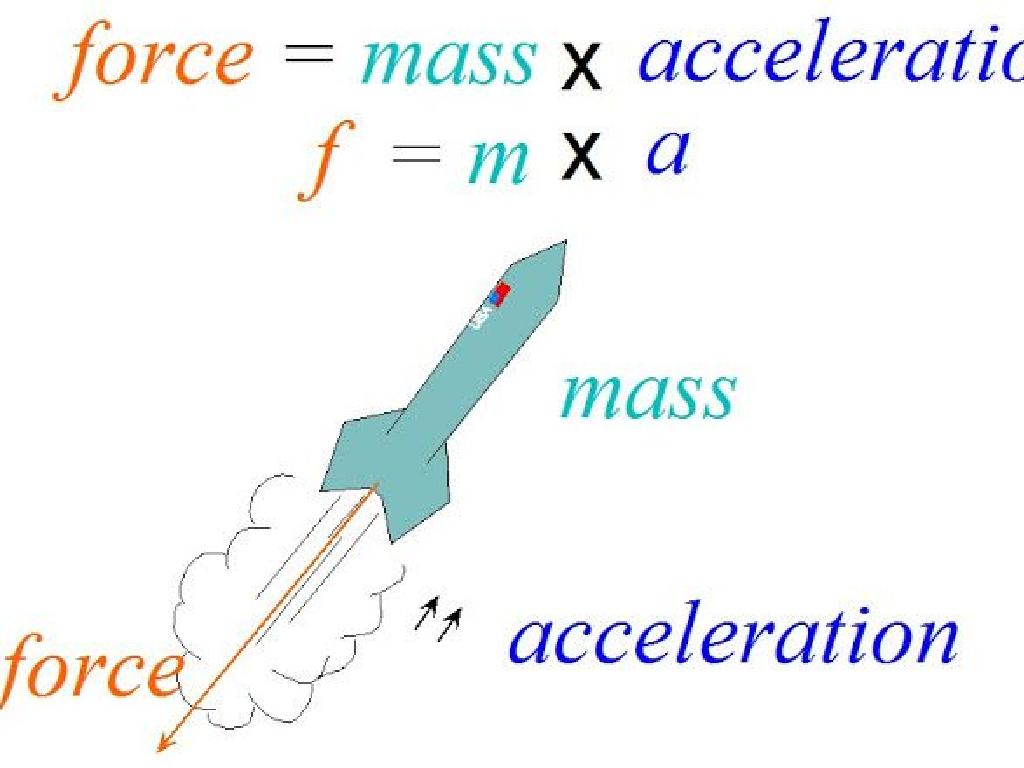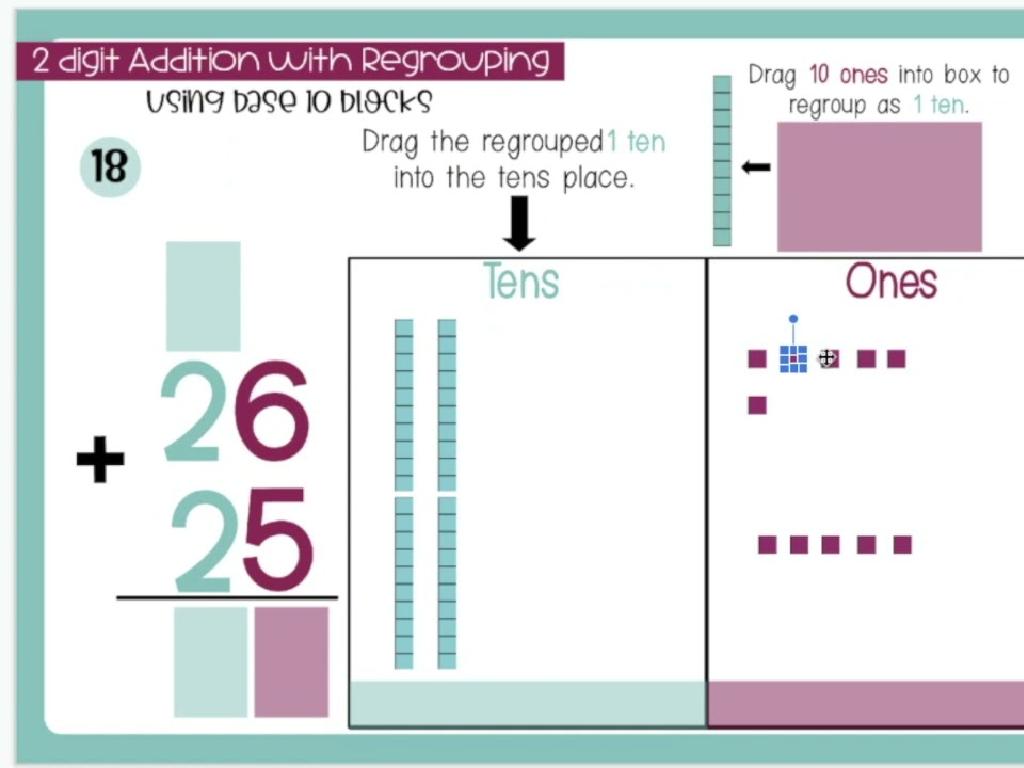Brightness Of The Sun And Other Stars
Subject: Science
Grade: Fifth grade
Topic: Astronomy
Please LOG IN to download the presentation. Access is available to registered users only.
View More Content
The Brightness of Stars
– Stars vary in brightness
– Stars shine differently due to size, distance, and age.
– The Sun: Our closest star
– The Sun is vital for life, providing light and warmth.
– Measuring star brightness
– Astronomers use magnitude scale to compare star brightness.
– The Sun’s role for Earth
– The Sun supports photosynthesis, weather patterns, and climates.
|
This slide introduces the concept of stellar brightness and the Sun’s importance to Earth. Begin by explaining that not all stars shine with the same brightness and that this can be due to a variety of factors including their size, how far away they are, and their age. Emphasize the Sun’s role in our solar system as the nearest star to Earth and its critical importance in sustaining life through providing light and warmth. Introduce the concept of the magnitude scale, which astronomers use to measure and compare the brightness of stars. Conclude by discussing how the Sun’s energy is essential for processes like photosynthesis, influencing weather patterns, and maintaining the climates necessary for life on Earth.
What Makes a Star Shine?
– Stars are hot balls of plasma
– Plasma is superheated gas, making stars glow
– Light and heat from nuclear reactions
– Stars fuse hydrogen into helium, releasing energy
– The Sun: Our closest star
– Located about 93 million miles from Earth
– Stars’ brightness varies
|
Introduce the concept of a star as a massive, bright sphere of plasma, which is a state of matter similar to gas but with charged particles. Explain that stars, including our Sun, produce light and heat through nuclear fusion, where hydrogen atoms combine to form helium, releasing vast amounts of energy. Emphasize the Sun’s proximity to Earth, making it the brightest star in our sky. Discuss how different stars have varying levels of brightness, which can depend on their size, temperature, and distance from us. Encourage students to think about how the Sun as a star affects life on Earth and to consider the vastness of space with countless other stars.
The Sun: Our Very Own Star
– The Sun, heart of our Solar System
– Sunlight: Essential for Earth’s life
– The Sun’s light enables plants to make food through photosynthesis, which supports the food chain.
– Sun’s surface: Extremely hot
– At 5,500°C, the Sun’s surface is so hot it glows, giving us light and warmth.
– Understanding Sun’s brightness
– The Sun’s brightness is due to its high temperature and the nuclear reactions happening in its core.
|
This slide introduces the Sun as the central star of our Solar System and its importance to life on Earth. It provides an opportunity to discuss the role of the Sun in providing the light and heat necessary for life, through processes like photosynthesis. The surface temperature of the Sun is a talking point to explain why it’s so bright and how it affects Earth. Emphasize the enormity of the Sun’s temperature compared to anything experienced on Earth. The concept of nuclear fusion, which powers the Sun, can be touched upon to explain its brightness. Encourage students to think about how different our planet would be without the Sun’s energy.
Understanding Star Brightness
– Brightness: light seen from a star
– Luminosity: star’s actual brightness
– Luminosity is the true light a star emits, regardless of distance
– Distance affects perceived brightness
– Stars closer to Earth look brighter, but might not be more luminous
– Comparing true brightness of stars
– Astronomers use tools to measure and compare stars’ luminosity
|
This slide introduces the concept of star brightness in astronomy, distinguishing between apparent brightness and luminosity. Brightness is the amount of light we see from a star from Earth, which can be deceptive because it’s influenced by the star’s distance from us. Luminosity, on the other hand, is the actual amount of light a star emits. It’s important for students to understand that a star may appear bright because it’s close to Earth, not necessarily because it’s emitting more light. Astronomers use specific tools and methods to measure the true brightness of stars, allowing them to compare the luminosity of stars at different distances. Encourage students to think about how these concepts apply to stars they know, like the Sun, and to consider the vastness of space where distances can greatly affect our perception.
Comparing Our Sun to Other Stars
– Stars vary in size
– Some stars are giants or dwarfs compared to our Sun
– Stars have different colors
– Just like a rainbow, stars can be red, orange, yellow, green, blue, and more
– Color indicates temperature
– A star’s color tells us if it’s hot or cold, blue stars are some of the hottest
– Red stars are cooler, blue are hotter
– Red stars are much cooler than blue ones, think of it like a temperature scale
|
This slide aims to help students understand that stars, including our Sun, come in a variety of sizes and colors, which correlate to their temperatures. Larger stars are often called ‘giants’ or ‘supergiants,’ while smaller ones may be referred to as ‘dwarfs.’ The color of a star is determined by its surface temperature: red stars are cooler, while blue stars are much hotter. Encourage students to think of the color spectrum as a temperature scale, with red being cool and blue being hot. This concept can be reinforced with activities such as comparing the colors of stars in images or using colored beads to represent different star temperatures.
The Hertzsprung-Russell Diagram
– Astronomers’ tool for star classification
– It maps stars by temperature and brightness
– Shows color, luminosity, and lifespan
– Color indicates temperature, brightness shows luminosity
– Sun’s position on the diagram
– Our Sun is in the ‘main sequence’ area
– Understanding stars’ characteristics
|
The Hertzsprung-Russell Diagram is a crucial tool in astronomy that helps scientists classify stars based on their temperature and brightness. It illustrates the relationship between a star’s color, which is determined by its temperature, and its luminosity or brightness. Additionally, the diagram provides insight into the lifespan of stars. When discussing the Sun’s position on the diagram, explain that it falls into the ‘main sequence’ category, which is where stars spend the majority of their life. This slide will help students visualize and understand the vast range of star characteristics in our universe and where our Sun fits among them.
Activity: Create Your Own Star
– Craft your model star
– Color indicates temperature
– Blue is hottest, red is cooler
– Glitter for star’s brightness
– More glitter means more luminous
– Share your star’s story
|
This hands-on activity is designed to help students understand the concepts of star temperature and brightness in a fun and creative way. Provide a variety of craft materials and guide the students to choose colors that represent different star temperatures, with blue for the hottest stars and red for cooler ones. Encourage them to add glitter to represent luminosity, explaining that a brighter star would have more glitter. After the activity, each student will share their star’s story, including its temperature, brightness, and any other characteristics they wish to add. This will reinforce their understanding of the relationship between a star’s color and its temperature, as well as the concept of luminosity in stars.
Class Discussion: Stars and Their Brightness
– Share today’s learning about the Sun and stars
– Discuss how star brightness affects our view
– Brighter stars are more visible from Earth
– Explore the importance of studying stars
– Studying stars helps us understand the universe
– Reflect on the role of stars in the universe
|
This slide is meant to facilitate a class discussion reflecting on the day’s lesson about the Sun and other stars. Encourage students to articulate what they’ve learned about the characteristics of the Sun compared to other stars. Discuss how the brightness of stars, which depends on their size and distance from Earth, affects how we see them in the night sky. Emphasize the importance of studying stars in understanding not only our own solar system but also the broader universe. This discussion will help consolidate their learning and underscore the relevance of astronomy in science.
Wrapping Up: Sun’s Brightness & Starry Homework
– Recap: Sun’s role in the Solar System
– Homework: Draw the night sky
– Use your creativity to depict the night sky
– Mark stars by brightness levels
– Use colors or symbols to show stars’ brightness
– Share drawings next class
|
As we conclude our lesson on the brightness of the Sun and other stars, let’s remember the central role the Sun plays in our Solar System. For homework, students are tasked with drawing the night sky as seen from their perspective. They should try to mark stars with varying brightness, using colors or symbols to differentiate them. This activity will help reinforce their understanding of the concept of brightness in stars and the Sun. In the next class, students will have the opportunity to share their artwork and discuss their observations, which will further solidify their learning and allow for a visual representation of the concepts discussed.






